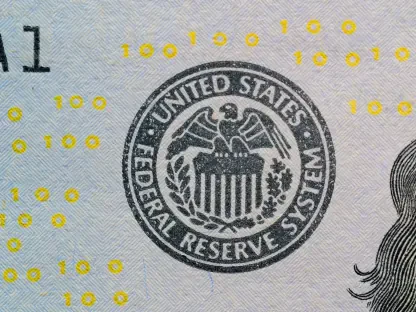Recent developments in the financial markets during the Asian trading session on May 2, 2025, have drawn attention to the intricate interplay between investor behavior and international diplomatic endeavors. The Asian markets, akin to a barometer of global economic sentiment, have oscillated in response to evolving narratives between major economic powers. The financial ecosystem’s fluctuations reveal a broader picture of how US-China trade relations cast rippling effects across borders, compelling investors to continually recalibrate their strategies. The stakes are profound and multifaceted, underscoring how shifts in economic diplomacy permeate through equity, currency, and commodity markets, setting the stage for an in-depth analysis of the intricate dynamics at play.
Impact on US Stock Indices
In this evolving economic narrative, initial losses in US stock indices like the S&P 500 and Nasdaq 100 E-mini futures offered a glimpse into the caution pervading investor sentiment. Despite Apple and Amazon reporting robust first-quarter earnings, the market’s response was tepid, reflecting anxiety over continued growth in the tech sector amidst broader uncertainties. Investors seemed to approach these developments with a degree of skepticism, pondering the longevity of tech companies’ upward trajectories in a landscape peppered with potential headwinds. However, a sharp pivot occurred when China’s Commerce Ministry signaled the possibility of revitalized trade talks with the US.
This announcement acted as a catalyst for market optimism, swiftly transforming the indices’ fortunes. The S&P 500 and Nasdaq 100 E-mini futures reversed their earlier losses, posting gains that signified renewed investor hope in the prospect of harmonious US-China trade relations. The evolution here underscores how diplomatic discourse can substantially mold market perceptions and investor strategies, highlighting the sensitivity of equities to geopolitical shifts. This moment of recalibration encapsulated a broader narrative: the pivotal role that international relations play in shaping domestic markets, illustrating a dance of optimism and caution that exemplifies current financial market sentiments.
Asian Equities Reaction
The optimistic vibes from potential US-China trade talks echoed loudly across Asian markets, particularly in Hong Kong’s Hang Seng Index, which surged significantly, nearing a one-month zenith. Post-Labor Day holiday optimism swept across the index, signifying investors’ growing confidence in a smoother trajectory for global trade relations. This upward momentum highlighted a period where markets eagerly absorbed potential diplomatic breakthroughs, enhancing equities with a shine of positivity that many investors found reassuring. Hong Kong, as a pivotal trade hub, reflects this sentiment acutely, where reduced tensions between economic titans spell positive implications for trade-reliant local economies.
Meanwhile, Tokyo’s Nikkei 225 continued to ride a wave of growth, clocking its seventh consecutive session of gains. This streak mirrored Japan’s careful navigation of trade negotiations with the US, adding doses of diplomatic stability to its economic outlook. The methodical approach adopted by Japan amid trade discussions seemed to resonate with its investors, encouraging a stable yet optimistic market performance. Japan’s intricate balance demonstrates how regional equities align themselves with broader global trade tides, embedding expectations of geopolitical developments into their indices. These reactions offer a panoramic view of how Asian markets pulse in tune with the ever-evolving symphony of international trade relations.
Currency Market Dynamics
Transitioning to currency markets, the US dollar’s robust stance against the Japanese yen marked a striking trend. The yen’s sharp decline could be traced to the Bank of Japan’s decisions to retain unchanged interest rates and the downward revision of its fiscal growth forecast. This confluence of domestic monetary policies and external trade uncertainties resulted in the yen’s depreciation, emphasizing Japan’s economic vulnerabilities. As trade-dependent economies brace for external shocks, these shifts in currency values underline the profound influence of economic strategies and global price dynamics on national currencies.
These dynamics not only scrutinize Japan’s economic prospects but also illustrate a bolstered confidence in the US dollar. Market participants appear to see the dollar as a relative refuge amidst Japan’s trade uncertainties, carving a narrative that fits within broader contexts of international finance. The interplay of fiscal policies, central bank decisions, and geopolitical maneuvering delineates an economic landscape where currencies are pivotal actors. Investors, currency traders, and strategists keep a keen eye on these fluctuations, understanding that in currency markets, every whisper in trade corridors can cascade into significant shifts in exchange rates.
Changes in Commodity Prices
In the realm of commodities, Gold (XAU/USD), conventionally regarded as a safe haven, exhibited a notable downturn, marking its third straight day of losses. This decline to a two-week low of $3,201 is attributable to the waning demand for secure assets as hopes of reduced trade tensions mounted. In calming market waters, the urgency to hedge against geopolitical instability through Gold typically lessens, drawing a line between peace and volatility. The ability of diplomatic narratives to shift the desirability of traditional safe havens like Gold underscores the interconnectedness of commodity prices to geopolitical sentiment.
However, Gold’s market narrative took a subtle twist as it regained some ground in early Asian trading, hinting at speculative activities tethered to anticipated US economic data releases. This bounce back embodies the intricate dance between technical market indicators, such as the 20-day moving average, and broader investor expectations. Analysts who dissect such metrics seek to discern opportunities within Gold’s fluctuating prices, with sustainable trends often arising from the synthesis of technical insights and global economic cues. Consequently, Gold’s oscillations provide not just a snapshot of market sentiment but also a roadmap for traders navigating the complexities of commodities amidst geopolitical fluctuations.
Broader Implications and Market Sentiment
Recent movements in the financial markets during the Asian trading session on May 2, 2025, have highlighted the complex interactions between investor conduct and global diplomatic efforts. Asian markets serve as indicators of worldwide economic sentiment, reacting to the continuous development of narratives among leading economic giants. These fluctuations in the financial ecosystem uncover a broader scenario where US-China trade relations exert significant influence across international borders, prompting investors to regularly adjust their approaches. The implications are deep and varied, emphasizing how transformations in economic diplomacy resonate throughout equity, currency, and commodity markets. This scenario paves the way for a comprehensive examination of the detailed dynamics in effect. Investors must adapt quickly to these changes, maintaining vigilance as they navigate an ever-evolving landscape inspired by diplomatic shifts and power plays, demanding a keen awareness of both global trends and local nuances in financial decision-making.









